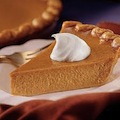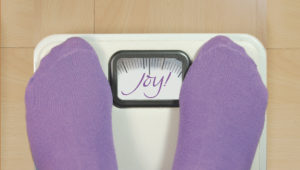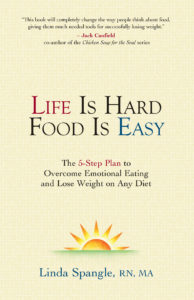Instead of depending on others to help you be successful with your diet, make a commitment that you will protect your program at all costs! [Read more…]
Posts in Long-term Success
20-year plan for managing your weight
Whether you’re just starting a new diet, or you’ve reached your goal, you still have to be clear about your long-term success plan.
But maintaining your weight doesn’t have to be an overwhelming project. Instead, it just involves having a few action steps that you follow every single day, for weeks and eventually years.
Just like brushing your teeth or taking a shower every day, you can define your daily approach to managing your weight. Making a 20-year plan helps you determine your exact method for sticking with your goals during the years ahead.
How I will live forever
Think about your goals for today as well as for the coming week. What actions do you plan to take during that time period?
Do you intend to follow a specific eating plan or diet program? Will you be exercising? If so, what will you do and how much? What types of things will you do for self-care?
Now, mentally, fast forward to how you plan to live during the next year. What about the next five years, and even 20 years?
Which of your current actions do you want to keep in your weight-management program forever? With those ideas in mind, get ready to make a long-term plan!
20-Year Plan for Living Healthy
At the top of a piece of paper, write the words, “My 20-Year Plan for Living Healthy.” (Or you can use the Diet Coach Cafe worksheet.)
Then dream big about what it will take to maintain your weight and your healthy lifestyle long-term. Following the directions with each of the next sections, develop a blueprint for how you’ll live for the next 20 years.
What I can do forever
In this section, plan a variety of actions you can do the rest of your life. Don’t be too restrictive such as saying you’ll follow a 1200-calorie eating plan.
You aren’t likely to track your calories every single day in the years ahead. Instead, plan realistic goals like eating low-fat, monitoring portion amounts, limiting alcohol, or exercising at least three times a week. Make a list of seven items you plan to do for the next 20 years.
Favorite foods
Choose three of your ultimate favorite foods. Then using an approach like “smaller amounts, less often,” determine how you can enjoy these foods without damaging your goals.
Decide how often you’d like to eat your favorites, then plan them into your program, not out of it.
Exercise
Set exercise goals that are reasonable but strong enough to challenge yourself. Be specific about your action plans as well as how you’ll stick with them.
Barriers
Identify potential high-risk areas that might keep you from maintaining your success. Think about current issues as well as past ones that could get in your way. Add a few thoughts on how you’ll cope with these problems so they don’t sabotage your efforts.
Crisis plan
What will you do if you begin to regain weight? Make a contingency plan for taking immediate action if you get into trouble with your goals.
Determine a “red flag” weight on the scale or a favorite pair of jeans that will trigger a mental alarm and set your crisis plan into motion.
Sample 20-Year Plan
Cindy had lost 75 pounds and was now starting a maintenance plan. She was worried that she’d gain the weight back as she’d done so many times in the past. Writing her 20-year plan helped her feel more prepared and confident about how she could maintain her success. Here is her 20-year plan.
What I can do forever:
- Eat low fat, limit to forty grams of fat a day or less
- Listen to my body’s signals for hunger and fullness
- Monitor portion sizes, keep them “reasonable”
- Eat my favorite foods using the principle of “smaller amounts, less often”
- Eat dessert only if it’s “special” or unusual
- Push myself to eat four to five servings of fruits and vegetables a day
- Keep learning new “tricks” and approaches that work for me
My three favorite foods: My plan for managing them
- Cookies, especially chocolate chip ones: Plan that I can have two cookies a week
- Lasagna—have it once a month: Watch for the point of “fullness”
- Cheesecake—once every two months: Savor it and appreciate the flavor
My exercise plans:
- Walk four to five times a week
- Do toning and strength-training exercises every other day
- Use a wall chart to record my progress as well as celebrate my success
Barriers and life issues that I will work on, including my plan for improvement:
- Stress at work—take breaks often, keep my exercise plan strong
- Emotional eating—review materials I’ve learned, add new coping skills
- Not exercising—keep records, build in non-food rewards such as music CD’s or a new book
Immediate plan if I begin gaining weight:
- Keep a food record. Count fat grams and decrease totals for the day to 40 or less
- Exercise more often, up to five or six days a week
- Evaluate the emotional issues affecting my eating patterns
Why seeing food makes you want to eat
 You’ve been through it many times. Everything was fine until you saw the doughnuts or smelled the popcorn.
You’ve been through it many times. Everything was fine until you saw the doughnuts or smelled the popcorn.
Food cues or “triggers” include all those little signals and thoughts that tell you to eat something when you weren’t planning on it.
Many triggers such as the sight, smell or even the taste of food are easy to recognize. But even images of food such as billboards or TV ads can crumble your resolve.
One minute you weren’t even thinking about eating, the next, you can’t stop thinking about it.
Food triggers
You may have conditioned yourself to seek food every time specific things happen. For example, do you automatically head for the refrigerator during TV commercials?
What about after getting a telephone call from your mother? Perhaps you catch sight of a vending machine and start reaching into your pocket for change.
Some triggers, such as those prompted by certain emotions, are very subtle. You might not even realize you are feeling depressed or lonely until you start searching for something to eat.
Triggers can also include situations, people or habits you have associated with food and eating in the past. Think of all the places or events where you might overeat, such as parties, cooking, family reunions, or friendships that revolve around food settings.
Sight of food
Anything that puts tempting food into your line of vision can become a food trigger. When you open the refrigerator door to get a can of soda, you glimpse a tasty leftover.
You weren’t wanting anything to eat until you actually saw the food, then you suddenly realize, “Wow. That looks so good!” Even after you shut the refrigerator door, you’re in trouble because you can’t get the food out of your mind.
Smell of food
At theaters, the snack bars always seem to have a batch of popcorn in process as you arrive for the movie. Theater personnel know that many people can’t resist the aroma of fresh popcorn.
The cinnamon roll bakeries in malls use the same principle. By intermittently putting another pan of rolls in the oven, they almost guarantee you will be lured by the smell of fresh baking.
Taste and texture
When you take second helpings of food at the dinner table, you typically aren’t doing it out of hunger. You wanted to repeat the experience of having the taste or the texture in your mouth.
Taste triggers are what causes us to keep reaching for another cookie or a few more malted milk balls.
People
Often the people around us become a trigger to unplanned eating. Lots of times we’ll match what others are doing such as saying, “If you’re going to order a hamburger and fries, I will too.”
Certain groups of people may have established a routine with always eating pizza or going to a particular restaurant. “It’s simply what we do when we’re together.” These people and events become triggers for you to continue following the same food patterns.
Multiple triggers
At the grocery store, suppose you notice a bag of chocolate candy kisses. You mentally flash back to childhood and recall the fun of pulling the tiny strip of paper that opened the foil, exposing the sweet dark chocolate.
Without realizing it, you add a bag of these candies to your shopping basket. In this case, buying candy kisses may have been triggered not only the sight of food but also by nostalgia, food memories, lonely feelings or the need for nurturing, stress, desire to please and family ties.
How to manage triggers
In your efforts to manage your weight, you need a lot of tricks to stop you from exclaiming, “Why did I eat that?” after it’s too late.
Unexpected food cues are often responsible for the times you slip off your diet plan and eat. To be able to resist these food prompts, you have to recognize and respond to them beforeyou’ve already eaten.
When you do give in to a food trigger, practice looking backward at what was happening right before you started eating.
You might also determine whether you are more likely to be tripped up by external triggers such as the sight of food or internal ones that involve emotional needs.
Once you’ve identified your high-risk areas, determine that you won’t put yourself in situations that involve them.
Don’t tempt yourself in the first place, rather than fight to sustain your willpower. Practice saying NO to your friends, family or co-workers who push you to eat.
Susan described how she learned to manage her peanut butter cravings. “I never buy it any more. I’ve learned to not even bring peanut butter into my house because I keep dipping into it and in three days I finish off the whole jar.”
Here are three simple ways to manage food triggers instead of giving in to them.
1. Avoid them
Whenever you can, avoid triggers by putting distance between you and your high-risk foods. Don’t stock items such as chips, cookies or candy in your home or work setting.
Question the purpose of some of your food items. Do you really need to keep a candy jar on your desk? Is it just a subtle way to get people to like you? If so, look for other ways to build your connections, such as handing out free flowers once a week or sharing books you enjoy.
2. Flee when necessary
Recognize when you are weak and about to give in. Then leave the setting. Take a walk, go home, leave the room, even go to bed if necessary.
3. Brush your teeth
Anytime a food taste gets you started, you risk being triggered to eat more. But you can instantly stop the taste trigger by the simple act of brushing your teeth.
This draws a line in your mouth, decreasing the risk you will put the taste back in.
If you don’t have the option to brush your teeth, eat something with a distinct opposite taste of what you are hooded on.
Try sucking on a lemon wedge or eating a dill pickle to block a sweet or salty taste. Reach for a stick of gum or a strong mint flavored candy.
The Cafe – Long-Term Success
 Become a long-term success story!
Become a long-term success story!
Article: Why Seeing Food Makes You Want to Eat
You’ve been through it many times. Everything was fine until you saw the doughnuts or smelled the popcorn. Food cues or “triggers” include all those little signals and thoughts that tell you to eat something when you weren’t planning on it. …. keep reading
Article: 20-Year Plan for Managing Your Weight
Whether you’re just starting a new diet or you’ve reached your goal, you still have to be clear about your long-term success plan. Making a 20-year plan helps you determine your exact method for sticking with your goals during the years ahead …. keep reading
Worksheet: 20 Year Action Plan
What I can do forever. … keep reading
The Cafe – Stress Management
 Don’t let stress ruin your weight loss
Don’t let stress ruin your weight loss
Use these tools to manage it
Article: Wear a “Healthy Day” Hat
Pretend that you put on a “Healthy Day Hat.” Every day, do at least 5 things that will help you label the day as being a “healthy one.” When you hang the healthy day sign over your head, it will inspire you to stay with your diet or maintenance program successfully the rest of the day. … keep reading
Best book for working on stress management
The 5-Step Plan to Overcome Emotional Eating
and Lose Weight on Any Diet
See Chapter 14: Life is not stress
Available at Amazon, Barnes and Noble and most independent bookstores
Worksheet: Three Instant Tools for Stress Relief
When stress becomes overwhelming, you need a quick, effective way to regain your sanity … keep reading




